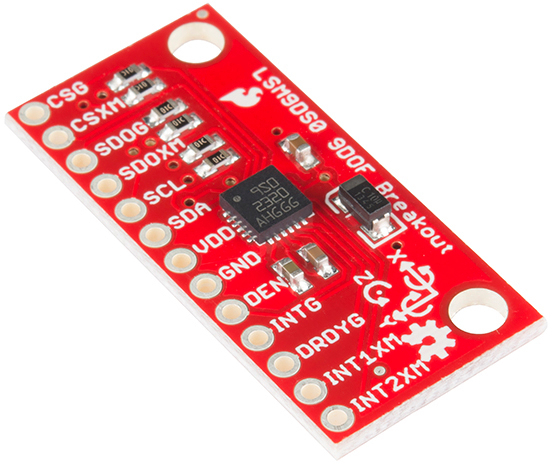Haven't done much flying since the last post but quite a bit of logistical thinking-- both alone and with others. I have two friends interested in working on this project with me-- my girlfriend,
Nicole Lay, a Computer Science graduate, and my friend,
Aaron Bradshaw, an engineering student at University of Kentucky. You may have noticed the yet unfulfilled "AJ Labs" link over at
leibeck.tk, and that's what we intend to put there. It's really touch and go while we figure out how we want to share our information, so for the time being just know they are contributing from close or afar.
In terms of the project, I've tried to make it into a basic logistics problem. What kind of information are we receiving, what information can we derive from this existing information, and how can we use this connectivity to achieve our goal. So let's do it this way:
The Problem: We want to be able to have the drone follow targets during a variety of activities.
Current Thoughts: Connecting the drone to another "theoretical" device in order to orient the drone towards the device, and to follow it.
Available Information: On the
ardrone_automony github page, you can see a concise list of the accessible information:
header: ROS message header
batteryPercent: The remaining charge of the drone's battery (%)
state: The Drone's current state: * 0: Unknown * 1: Inited * 2: Landed * 3,7: Flying * 4: Hovering * 5: Test (?) * 6: Taking off * 8: Landing * 9: Looping (?)
rotX: Left/right tilt in degrees (rotation about the X axis)
rotY: Forward/backward tilt in degrees (rotation about the Y axis)
rotZ: Orientation in degrees (rotation about the Z axis)
magX, magY, magZ: Magnetometer readings (AR-Drone 2.0 Only) (TBA: Convention)
pressure: Pressure sensed by Drone's barometer (AR-Drone 2.0 Only) (Pa)
temp : Temperature sensed by Drone's sensor (AR-Drone 2.0 Only) (TBA: Unit)
wind_speed: Estimated wind speed (AR-Drone 2.0 Only) (TBA: Unit)
wind_angle: Estimated wind angle (AR-Drone 2.0 Only) (TBA: Unit)
wind_comp_angle: Estimated wind angle compensation (AR-Drone 2.0 Only) (TBA: Unit)
altd: Estimated altitude (mm)
motor1..4: Motor PWM values
vx, vy, vz: Linear velocity (mm/s) [TBA: Convention]
ax, ay, az: Linear acceleration (g) [TBA: Convention]
tm: Timestamp of the data returned by the Drone returned as number of micro-seconds passed since Drone's boot-up.
Derivation and Communication: Of particular interest for my idea is the
rotz parameter. If our "theoretical device" could have a similar parameter, but with certainty, we could line up the two devices on similar plane, and have the drone maintain a 180 degree relationship, facing the device at all times. And as long as the device maintained the ability to be moved relatively, this transformation could be applied to the drone. As you can see, most of this relies on a communication and transformation from the external device.
The Device: We're also putting a lot of emphasis on what the particular device could be. For the sake of my upcoming project for electronics course about microcontrollers, I may consider using an Arduino with a GPS shield, if that is indeed a possibility. It could expand to mobile devices like phones and tablets, but getting an app and setting it up to communicate with ROS could be even more difficult. We'll see, I suppose. I still need to try my luck at controlling the drone with ROS.
A side note: It would seem intuitive to purchase a
GPS flight recorder for the drone, and maybe give it a better idea of where it is relative to its surroundings, but I feel like this would be "buying" my way out of the situation. I understand that we're talking about a drone and other device, likely bring the cost up past 300-400$, but it's really important to me as an aspiring Engineer to make the most of what's available, not only for the challenge, but to make to make the end result available to the largest group of users. In truth there are already systems that extreme sports athletes use, but I would like expand this type of system to this cheaper platform. That's what it's all about!
We'll see where this idea takes us. I may not update for a while, but I'll be sure to include my flight videos when I can.
------------------------------------------------------------------------------------------------------------












